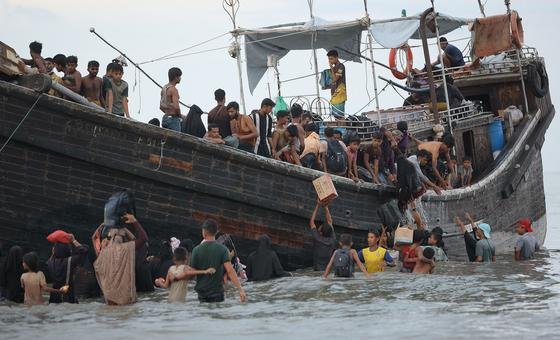Between January 15 and 17, nine people were killed and 31 injured in airstrikes and clashes in the southeastern region.
In Rakhine State, on January 18, three airstrikes hit the Marauk-U settlement, killing 28 and injuring 25. Apart from this, 19 civilians were reported to have lost their lives and around 41 others were injured in airstrikes in the northwestern region last week.
OCHA expresses deep concern for the safety of civilians and draws attention to the increased vulnerability of war-affected communities in an environment of continued violence and limited access to essential services.
The UN Aid Coordination Agency has called on all parties involved in the conflict to comply with international humanitarian law and ensure the protection of civilians.
The Southeast Asian country’s security situation remains volatile after the military ousted the democratically elected government in February 2021. At that time prominent political and government figures of the country were also arrested by the army.
At least 6,000 people have been killed and countless injured since the army, known as the Tatmadaw, took power. Many of these have been crippled by landmines and unexploded ordnance (UXO).
A deadly journey to safety
The crisis has disproportionately affected vulnerable populations, most of whom are the Muslim Rohingya minority. Millions of people are risking dangerous journeys at sea to escape persecution and violence.
About 460 Rohingya arrived in Malaysia and Indonesia between January 3 and 5 after weeks of sea travel, according to the UN refugee agency UNHCR.
At least ten people have been reported dead on this journey. Just three weeks ago, another 115 refugees arrived in Sri Lanka. At least six people died at sea during these journeys.
“Saving lives must be the first priority,” said Hye Kyung Joon, director of UNHCR’s regional bureau for Asia and the Pacific.
He also praised countries that accept and support refugees in vulnerable situations.
Worrying trend
UNHCR has also warned that the situation in Myanmar continues to deteriorate, so more people are expected to flee in the coming months.
In 2024, more than 7,800 Rohingya people tried to leave Myanmar by boat, an 80 percent increase from the previous year in 2023.
Among such life-threatening travelers, children accounted for 44 percent in 2024 and 37 percent in 2023.
UNHCR called on countries to ensure security at sea, respond to humanitarian needs and combat misrepresentation and hate speech against refugees and asylum seekers arriving on their shores.
“We call on all countries to continue search and rescue efforts and ensure that survivors receive the assistance and protection they need,” Hye Kyung Joon said.
Severe lack of money
Myanmar’s crisis has been exacerbated by inadequate funding for humanitarian operations, leaving millions without vital assistance.
Humanitarian aid workers estimate that nearly 20 million people, more than a third of the total population, will need assistance this year. This includes 63 lakh children and 71 lakh women.
Despite the urgent need, there is still an acute shortage of funds for humanitarian relief operations.
In 2024, $1 billion was needed but only 34 percent of that was received, leaving an estimated 1.4 million people without access to assistance.
For 2025, humanitarian aid workers have issued an appeal to raise $1.1 billion to provide life-saving assistance to the most vulnerable 5.5 million people.
“The people of Myanmar cannot afford a repeat of the lack of adequate funding in 2025; they need decisive action from the international community to support them, involving more resources, and they need it urgently,” said Marcoluigi Corsi, UN Interim Resident and Humanitarian Coordinator for Myanmar.

